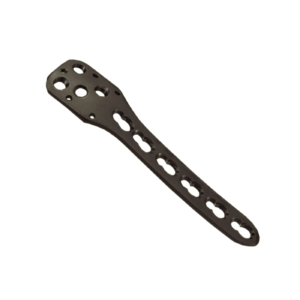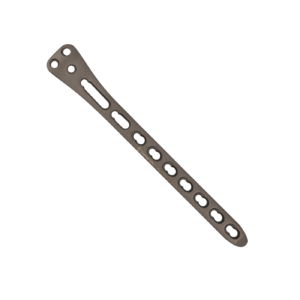
Humerus fractures, or fractures of the upper arm bone, are common injuries that can significantly impact a person’s mobility and quality of life. These fractures can result from various causes, such as falls, sports injuries, or trauma. Fortunately, medical advancements have provided effective treatment options for humerus fractures, one of which involves the use of plates. In this blog post, we will explore the key aspects of humerus fractures, their treatment with plates, and what you need to know about the recovery process.
Understanding Humerus Fractures
The humerus is the long bone that extends from the shoulder to the elbow. Fractures of the humerus can occur at different locations, including the proximal end (near the shoulder), the shaft (middle portion), or the distal end (near the elbow). These fractures can range from mild hairline cracks to complete breaks that result in bone displacement.
Types of humerus fracture
Proximal humerus fracture
Proximal and distal are words that describe where a fracture is located along your bone’s length. Proximal humerus fractures refer to fractures that occur near the shoulder joint at the proximal end of the humerus bone. The proximal end of the humerus includes the rounded head, the neck, and the tuberosities (bony projections). These fractures are common, accounting for approximately 5% of all fractures and are more prevalent in older individuals.
Distal humerus fracture
A distal humerus fracture is a break in the lower end of the upper arm bone (humerus), one of the three bones that come together to form the elbow joint. A fracture in this area can be very painful and make elbow motion difficult or impossible.
Most distal humerus fractures are caused by some type of high-energy event—such as receiving a direct blow to the elbow during a car collision. In an older person who has weaker bones, however, even a minor fall may be enough to cause a fracture.
Orthopedic implants for proximal humerus fractures
Orthopedic implants play a crucial role in the surgical treatment of proximal humerus fractures. The choice of implant depends on several factors, including the fracture pattern, bone quality, patient age, and surgeon preference. Here are some commonly used orthopedic implants for proximal humerus fractures:
Locking Plates
Locking plates are widely used in the surgical fixation of proximal humerus fractures. These plates have threaded screw holes that allow screws to lock into the plate, providing a stable construct. Locking plates offer several advantages, including better resistance to pull-out forces, increased stability, and improved fixation in osteoporotic bone. They come in various shapes and sizes, such as proximal humerus locking plates, which are specifically designed for these fractures.
Intramedullary Nails
Intramedullary nails are long rods inserted into the medullary canal of the humerus to stabilize the fracture. These nails can be used in specific fracture patterns, such as two-part or three-part fractures with intact tuberosities. The nail provides stability by acting as an internal splint, allowing early motion and weight-bearing.
Prosthetic Replacement
In certain complex cases where the fracture is severe or irreparable, a prosthetic replacement may be considered. Hemiarthroplasty involves replacing the head of the humerus with a prosthetic implant, preserving the patient’s own humeral shaft. Total shoulder arthroplasty replaces both the head of the humerus and the glenoid socket with prosthetic components.
Orthopedic implants for distal humerus fractures
Orthopedic implants are commonly used in the surgical treatment of distal humerus fractures to provide stability and facilitate proper healing. The choice of implant depends on factors such as the fracture pattern, bone quality, patient age, and surgeon preference. Here are some commonly used orthopedic implants for distal humerus fractures:
Plates and Screws
Similar to proximal humerus fractures, locking plates and screws are frequently used in the surgical fixation of distal humerus fractures. These plates are typically contoured to match the anatomy of the distal humerus and provide stable fixation. Locking screws are used to secure the plate to the bone, offering improved resistance to pull-out forces. The specific plate used may vary based on the fracture pattern and surgeon’s preference.
Intramedullary Nails
In some cases, intramedullary nails can be utilized for the treatment of distal humerus fractures. These nails are inserted into the medullary canal of the humerus and provide stabilization. However, their use may be limited to specific fracture patterns and bone quality.
External Fixators
External fixators are devices that stabilize fractures from the outside of the body. They consist of pins or wires inserted into the bone above and below the fracture site, connected to an external frame. External fixators are typically used in more complex fractures or cases where the soft tissues are severely damaged, and a temporary stabilization is required before definitive surgery.
Proximal humerus plate
Proximal humerus plates are specifically designed to address complex and unstable fractures of the proximal humerus. These fractures often involve multiple bone fragments and require open reduction for proper alignment. The plates are constructed using materials such as stainless steel or titanium, which provide strength and biocompatibility.
One of the key advantages of locking proximal humerus plates is that they do not require bending during the surgical procedure. This feature allows for a simplified and efficient surgical technique. Furthermore, the plates are designed to minimize irritation to the surrounding soft tissues, reducing the risk of complications and promoting better healing.
The anatomical design of the locking proximal humerus plates ensures optimal placement of the holes and angulation of the screws. This feature facilitates secure fixation of the fractured bone fragments and provides stability during the healing process. Additionally, the plates have a low profile, which reduces the risk of subacromial impingement, a condition that can cause pain and restricted movement in the shoulder.
Distal humerus plate
A distal humerus plate is a specialized orthopedic device used to treat fractures and other conditions affecting the lower part of the humerus bone in the upper arm. It provides stability and support for proper healing and functional recovery. Additionally, modern distal humerus plates have a low-profile design, minimizing soft tissue irritation and promoting patient comfort. This design also aids in surgical ease and efficiency.
The distal humerus plate is made of biocompatible materials like titanium or stainless steel. It features a flat plate design with multiple screw holes, ensuring secure attachment to the bone using screws. The plate is anatomically contoured to fit the distal humerus, ensuring optimal alignment and stability.
The distal humerus plate offers several key advantages in fracture treatment. Firstly, it provides excellent fixation, ensuring rigid stabilization of fractured bone fragments. This promotes faster and more reliable bone healing. The plate also helps maintain proper bone alignment and length, reducing the risk of malunion or nonunion.
Orthopedic implants by Zealmax Ortho
Zealmax Innovations Pvt. Ltd., a leading manufacturer and exporter of orthopedic implants, specializes in the production of high-quality humerus plates. With a legacy of 12+ years, we take immense pride in our commitment to innovation and delivering genuine products that enable people to regain their mobility and quality of life without any limitations.
At Zealmax Innovations, we prioritize the well-being of patients by ensuring that our humerus plates provide excellent fixation, stability, and alignment.



